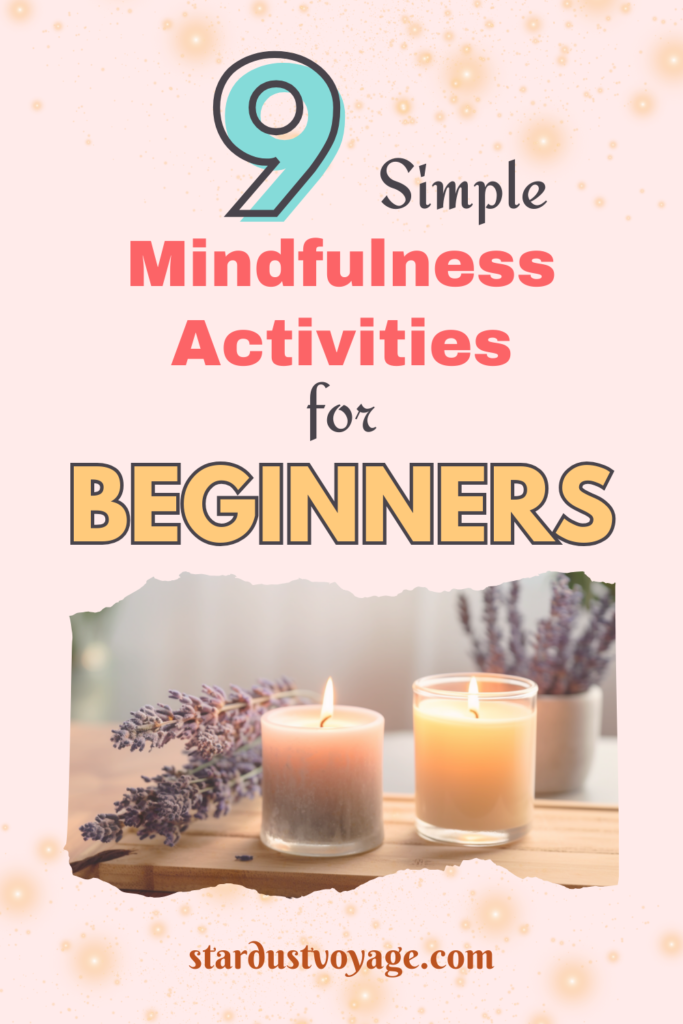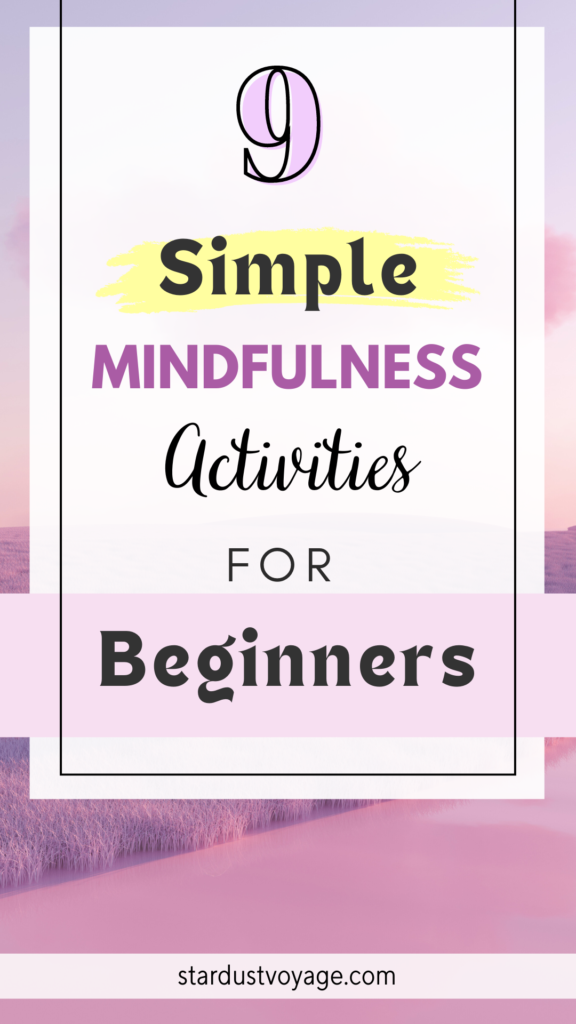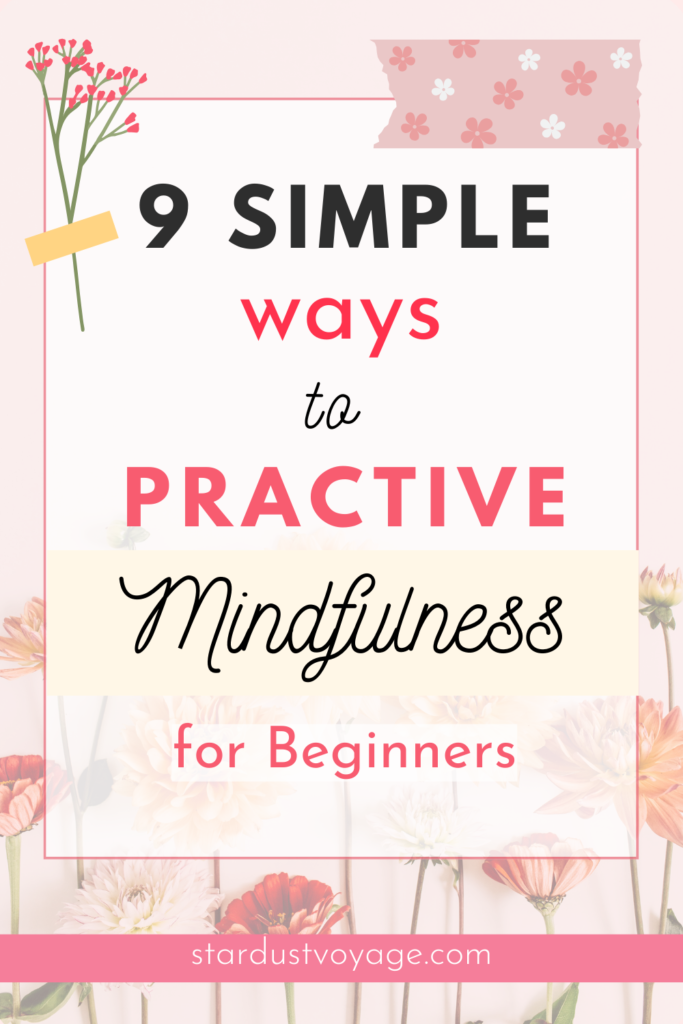The First Steps to a Mindful Life
In today’s fast-paced, digitally-driven world, finding moments of peace and presence can be challenging. Many of us are caught in a cycle of stress, anxiety, and distraction, yearning for a sense of calm and clarity. Mindfulness offers a powerful solution—a way to anchor ourselves in the present moment and cultivate a deeper sense of awareness and well-being. For those new to mindfulness, starting can seem daunting. But the beauty of mindfulness is its simplicity. It doesn’t require special skills or complicated techniques. Anyone can begin to incorporate mindfulness into their daily life with just a few simple practices. This post will guide you through nine beginner-friendly mindfulness activities that can help you embark on your journey toward a more mindful and peaceful life.

- The First Steps to a Mindful Life
- 1. Breath Awareness: Your Anchor to the Present
- 2. Body Scan Meditation: Tuning into Your Physical Self
- 3. Mindful Eating: Savoring Each Bite
- 4. Mindful Walking: Moving with Intention
- 5. Gratitude Practice: Cultivating Positivity
- 6. Mindful Listening: Fully Engaging in Conversations
- 7. Mindful Journaling: Clarifying Thoughts and Emotions
- 8. Mindful Coloring: Engaging in Creative Calm
- 9. Guided Meditation: Following a Calming Voice
- Conclusion: Embracing Mindfulness for a Better Life
1. Breath Awareness: Your Anchor to the Present
Breath awareness is a foundational mindfulness practice that helps you focus on the present moment. By simply paying attention to your breath, you can calm your mind and reduce stress.
How to Practice Breath Awareness
- Find a Quiet Space: Sit comfortably in a quiet place where you won’t be disturbed. This could be a quiet room in your house, a park, or even your car.
- Sit Comfortably: Ensure your posture is straight but relaxed. Place your hands on your knees or in your lap.
- Focus on Your Breath: Close your eyes and take slow, deep breaths. Pay attention to the sensation of the air entering and leaving your nostrils. Feel your chest and abdomen rise and fall with each breath.
- Count Your Breaths: If your mind starts to wander, gently bring your attention back by counting each breath. Start with a count of ten and repeat. You can also use a mantra like “in” on the inhale and “out” on the exhale.
- Be Gentle with Yourself: It’s natural for your mind to wander. When it does, gently guide your focus back to your breath without judgment.
Benefits of Breath Awareness
Practicing breath awareness can help lower your heart rate, reduce stress hormones, and improve your concentration. It’s a simple yet powerful tool that can be used anytime and anywhere to bring you back to the present moment.
2. Body Scan Meditation: Tuning into Your Physical Self
Body scan meditation involves focusing on different parts of your body, noticing any tension or discomfort, and consciously releasing it. This practice can help you become more aware of your body and promote relaxation.
How to Do a Body Scan Meditation
- Lie Down Comfortably: Lie down in a comfortable position, with your arms at your sides and legs slightly apart. You can also do this sitting up if lying down isn’t possible.
- Close Your Eyes and Breathe Deeply: Take a few deep breaths to relax. Feel your body sink into the floor or chair.
- Scan Your Body: Start at your toes and slowly move your attention up through your legs, torso, arms, and head. Notice any sensations, tension, or discomfort without judgment.
- Release Tension: As you become aware of tension, consciously relax those areas. For example, if you notice tension in your shoulders, visualize the tension melting away.
- Take Your Time: Spend about 20-30 seconds on each body part. Don’t rush through the process.
Benefits of Body Scan Meditation
Regular practice of body scan meditation can help you identify and release physical tension and stress, improve your body awareness, and enhance your overall relaxation and well-being.
3. Mindful Eating: Savoring Each Bite
Mindful eating involves paying full attention to the experience of eating and drinking. This practice can help you develop a healthier relationship with food and enhance your enjoyment of meals.
How to Eat Mindfully
- Eliminate Distractions: Turn off the TV, put away your phone, and sit down to eat without distractions. Create a calm and pleasant environment.
- Appreciate Your Food: Take a moment to appreciate the food before you. Notice the colors, textures, and smells.
- Eat Slowly: Take small bites and chew slowly, noticing the textures, flavors, and aromas of your food. Put your utensils down between bites.
- Listen to Your Body: Pay attention to your hunger and fullness cues. Eat until you’re satisfied, not stuffed.
- Reflect on Your Eating Experience: After your meal, take a moment to reflect on how you feel. Notice the difference between eating mindfully and eating mindlessly.
Benefits of Mindful Eating
Mindful eating can help improve digestion, reduce overeating, and increase your appreciation for food. It also encourages healthier eating habits and can help you recognize emotional eating patterns.
4. Mindful Walking: Moving with Intention
Mindful walking is a simple yet effective way to practice mindfulness and reduce stress. It involves walking slowly and paying attention to the experience of walking.
How to Practice Mindful Walking
- Choose a Quiet Path: Find a quiet, safe place where you can walk without distractions. This could be a park, a beach, or even a quiet street.
- Start with a Pause: Stand still for a moment and take a few deep breaths. Feel your body’s weight on your feet.
- Walk Slowly: Walk slowly, paying attention to the sensations of your feet touching the ground and your body moving. Notice how your weight shifts with each step.
- Engage Your Senses: Notice the sights, sounds, and smells around you. Observe without labeling or judging.
- Stay Present: If your mind starts to wander, gently bring your attention back to the act of walking.
Benefits of Mindful Walking
Mindful walking can help reduce stress, improve mood, and increase physical health. It’s also a great way to incorporate mindfulness into your daily routine, especially if you find sitting meditation challenging.

5. Gratitude Practice: Cultivating Positivity
A daily gratitude practice can shift your focus from what’s wrong in your life to what’s right, enhancing your overall sense of well-being.
How to Practice Gratitude Mindfully
- Keep a Gratitude Journal: Each day, write down three things you’re grateful for. They can be big or small.
- Reflect on Positive Moments: Spend a few minutes each day reflecting on the positive moments you’ve experienced. Think about why they were meaningful to you.
- Express Gratitude: Take the time to thank the people in your life who have made a difference. This could be through a note, a call, or a conversation.
- Mindful Moments of Gratitude: Throughout your day, pause and take a moment to appreciate something in your immediate environment—a warm cup of tea, a beautiful sunset, or a kind gesture.
Benefits of a Gratitude Practice
Practicing gratitude can enhance your mood, improve your relationships, and increase your overall happiness. It helps shift your focus to the positive aspects of your life, fostering a more optimistic outlook.
6. Mindful Listening: Fully Engaging in Conversations
In our busy lives, we often listen to others with only half our attention, thinking about our next task or response. Mindful listening involves fully engaging in the conversation and truly hearing what the other person is saying.
How to Practice Mindful Listening
- Be Present: Put away any distractions and focus entirely on the person speaking. Make eye contact and show that you are attentive.
- Listen Without Judgment: Pay attention without forming opinions or planning your response. Listen to understand, not to reply.
- Acknowledge and Reflect: Nod, make eye contact, and reflect back what you’ve heard to ensure understanding. Phrases like “It sounds like you’re saying…” can be helpful.
- Notice Non-Verbal Cues: Pay attention to the speaker’s body language, tone of voice, and facial expressions.
Benefits of Mindful Listening
Mindful listening can improve your relationships, enhance your communication skills, and increase your empathy and understanding. It fosters deeper connections and reduces misunderstandings.
7. Mindful Journaling: Clarifying Thoughts and Emotions
Journaling is a powerful mindfulness practice that can help you process your thoughts and emotions, reducing stress and anxiety.
How to Incorporate Journaling into Your Routine
- Set Aside Time Each Day: Choose a specific time each day to write, such as first thing in the morning or before bed.
- Create a Calm Environment: Find a quiet, comfortable place where you can write without distractions. Light a candle or play some soft music if it helps you relax.
- Write Freely: Write whatever comes to mind without worrying about grammar or spelling. The goal is to express your thoughts and feelings.
- Reflect and Review: Periodically review your journal entries to gain insights into your patterns of thinking and behavior.
- Use Prompts: If you’re not sure what to write about, use prompts such as “Today I feel…”, “I am grateful for…”, or “I noticed…”.
Benefits of Mindful Journaling
Mindful journaling can help you clarify your thoughts, process emotions, and gain insights into your behavior. It’s a therapeutic tool that promotes self-reflection and emotional healing.

8. Mindful Coloring: Engaging in Creative Calm
Mindful coloring involves coloring intricate patterns and designs while focusing on the present moment. This practice can help reduce stress and promote relaxation.
How to Practice Mindful Coloring
- Choose a Coloring Book and Tools: Select a coloring book with intricate patterns and your favorite coloring tools—pencils, markers, or crayons.
- Find a Quiet Spot: Sit in a quiet place where you can color without distractions.
- Focus on the Process: Pay attention to the colors, patterns, and the movement of your hand as you color. Let go of any distracting thoughts and stay present.
- Take Your Time: There’s no rush. Enjoy the process of creating something beautiful.
Benefits of Mindful Coloring
Mindful coloring can help reduce anxiety, improve focus, and enhance creativity. It’s a relaxing activity that can provide a much-needed break from daily stressors.
9. Guided Meditation: Following a Calming Voice
Guided meditation involves listening to a recording that leads you through a meditation practice. This can be especially helpful for beginners who may find it challenging to meditate on their own.
How to Practice Guided Meditation
- Find a Comfortable Space: Sit or lie down in a quiet, comfortable place where you won’t be disturbed.
- Choose a Guided Meditation: Select a guided meditation that suits your needs, whether it’s for relaxation, stress relief, or focus. There are many apps and websites that offer free guided meditations.
- Listen and Follow Along: Close your eyes, relax, and follow the instructions in the recording. Allow yourself to be fully present with the practice.
- Repeat Regularly: Try to incorporate guided meditation into your daily routine for the best results.
Benefits of Guided Meditation
Guided meditation can help you relax, reduce stress, and improve your focus. It provides structure and support for your mindfulness practice, making it easier to maintain consistency.
Conclusion: Embracing Mindfulness for a Better Life
Integrating mindfulness into your daily routine can significantly improve your mental and emotional well-being. These nine simple mindfulness activities are accessible to beginners and can be practiced anywhere, at any time. Whether it’s through breath awareness, mindful walking, or guided meditation, each practice offers a pathway to greater peace, presence, and clarity. Embrace these mindfulness activities, and discover how they can transform your daily life, helping you navigate the world with a calmer mind and a more open heart.
By starting with these beginner-friendly mindfulness practices, you’ll be taking the first steps on a journey towards a more mindful and fulfilling life. Remember, mindfulness is a practice that grows stronger with consistency and patience. Be gentle with yourself, and enjoy the process of becoming more present and aware.








